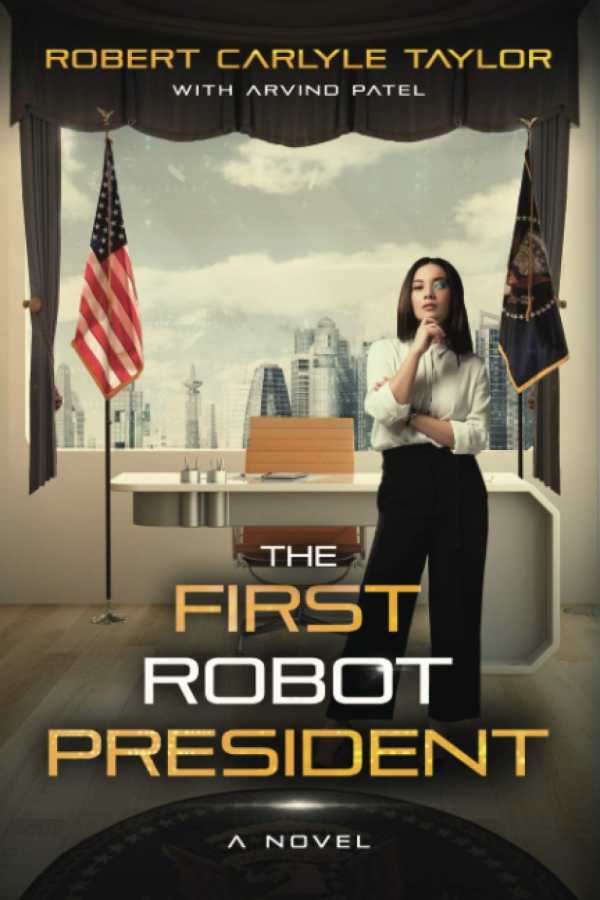The First Robot President
The First Robot President is an entertaining science fiction satire made fascinating because of its behind-the-scenes looks at the bruising world of modern politics.
Robert Carlyle Taylor’s thought-provoking political satire, The First Robot President, imagines a world in which a free-thinking, logical robot ascends to the highest political office, overcoming congressional gridlock and treachery to solve pressing global problems.
In the year 2484, the US faces the massive and growing issue of homelessness. It’s a crisis that’s accelerated by overpopulation, limited resources, and widespread unemployment. Google has taken over much of the country’s infrastructure. Enter Thomas Jenkins, a Green Party lobbyist and member of a prominent political family. Jenkins purchases a robowife, Esmeralda, a genius with expertise in political science and economics.
Within a few hours of becoming sentient, Esmeralda has designs on running for Congress, which her family takes as a joke. After she adopts and raises a daughter with Thomas, Esmeralda runs for Congress and wins. Her straight talk appeals to voters, and her popularity propels her to the most powerful position of government. But her path is not without its hitches, as members of Congress threaten to delegitimize her candidacy.
The novel’s style is straightforward; it makes use of direct characterization early on to reveal Esmeralda’s motivations. Sentences are direct and easy to follow, and the narrative follows a linear progression of events, from the “birth” of Esmeralda to her evolution as a political candidate. In this sense, the novel reads very much like her memoir.
Although set in the future, the book takes inspiration from twenty-first-century concerns. It explores themes including overpopulation, socioeconomic disparities, and environmental degradation in great detail through intense policy dialogues between its main characters. This includes background on the inner workings of legislative processes, from the power plays between opposing parties in Congress to the sometimes complicated paths that ideas take before becoming bills. When Esmeralda issues an executive order to impose a birth lottery on federal employees as part of her legislative agenda to tackle overpopulation, the intrigue and power plays between the different factions of the government play out in fascinating detail.
With the exception of Esmeralda, most of the characters are dimensionless, though. Esmeralda is the focal point of the story; she is the lens through which current events are viewed. Esmeralda is the outsider whose actions arouse suspicion in the political establishment by nature of her otherness. Because she is a robot, her decisions and actions are seen as being manipulated by her human husband, Thomas, who actually acts as her cheerleader. The robot candidate is a clever plot device to explore issues of discrimination and social exclusion. Despite the political intrigue and conflict that Esmeralda faces at every turn of her career, the story ends on an upbeat note, bringing Esmeralda’s story full circle.
The First Robot President is an entertaining science fiction satire made fascinating because of its behind-the-scenes looks at the bruising world of modern politics.
Reviewed by
Nancy Powell
Disclosure: This article is not an endorsement, but a review. The publisher of this book provided free copies of the book and paid a small fee to have their book reviewed by a professional reviewer. Foreword Reviews and Clarion Reviews make no guarantee that the publisher will receive a positive review. Foreword Magazine, Inc. is disclosing this in accordance with the Federal Trade Commission’s 16 CFR, Part 255.

